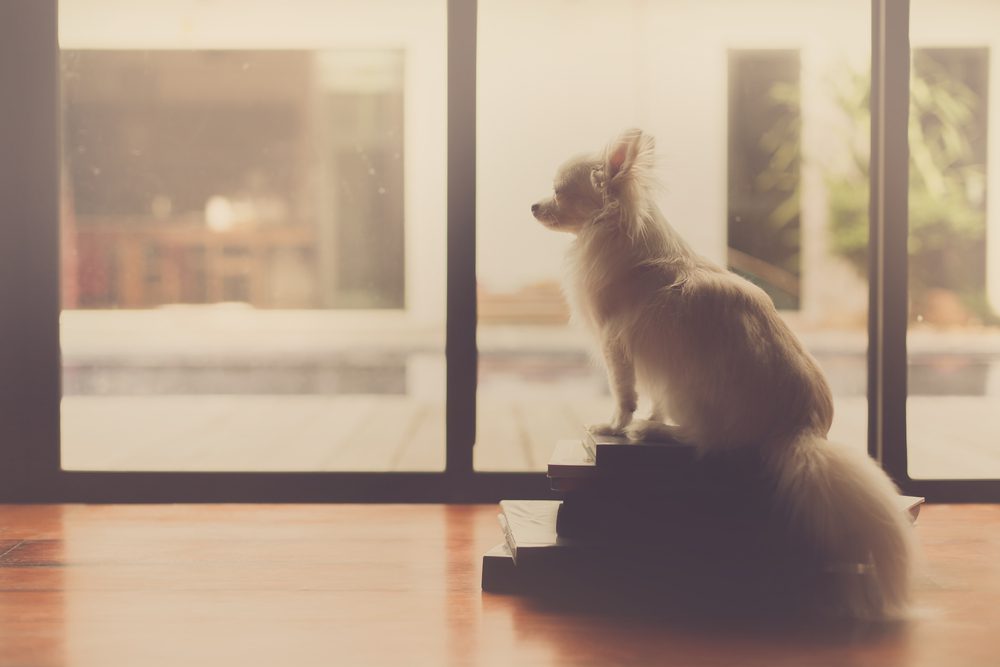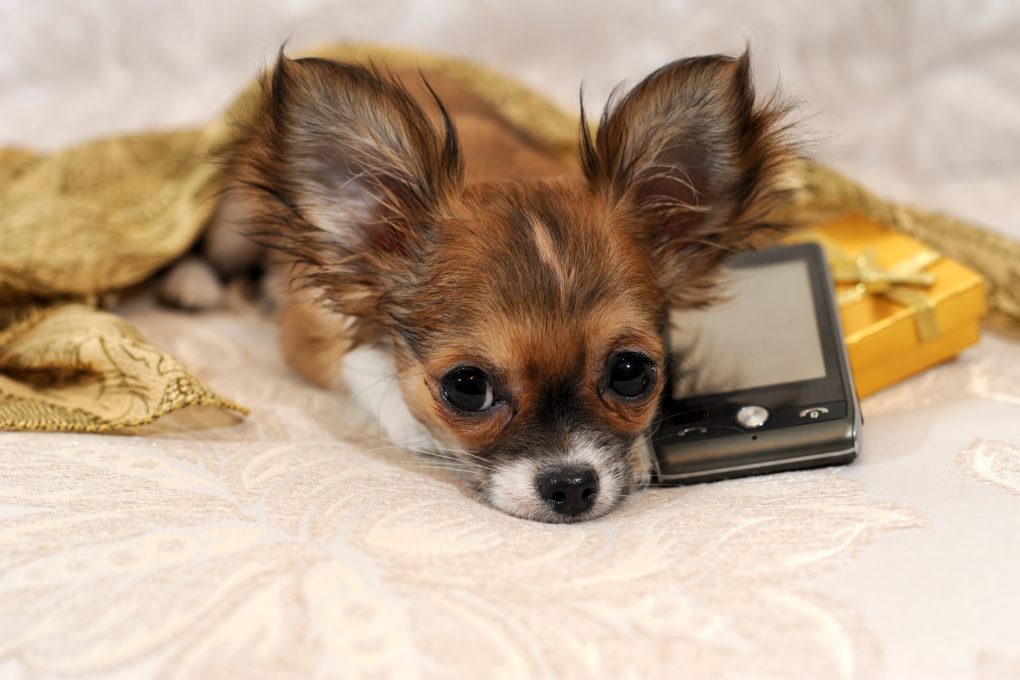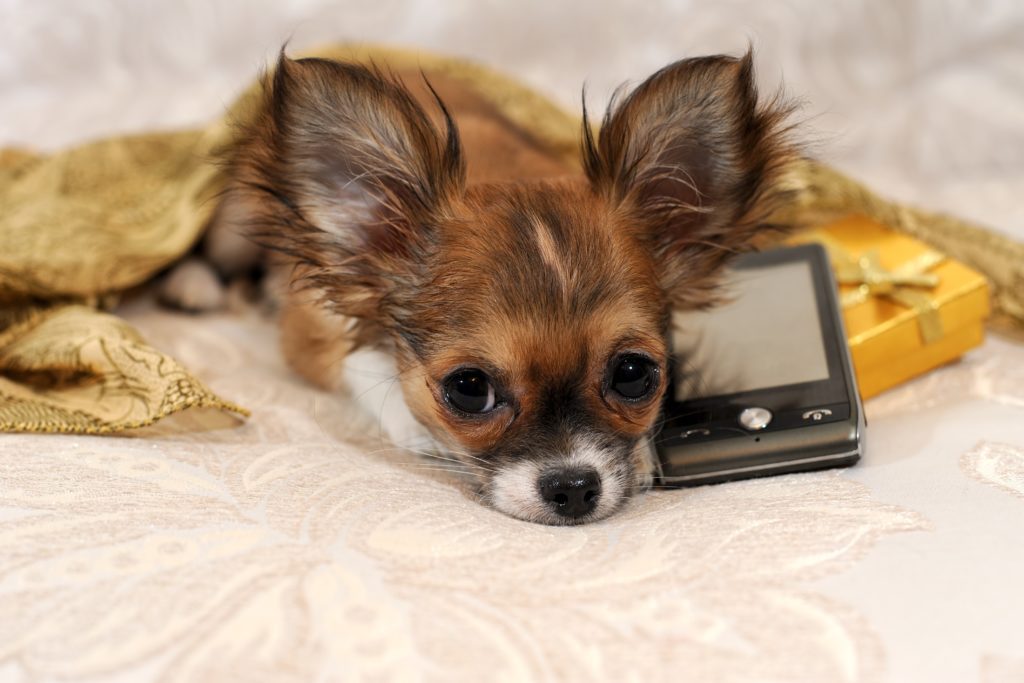I believe that this is the number one question that I get; “What can I do about my dog’s separation anxiety?”. It always starts with a complaint about their dog urinating when they are gone, or destroying blinds, curtains, pillows, or furniture when they are gone. Perhaps it’s complaints from neighbors about barking. All of these complaints could be attributed to separation anxiety. Or, your dog may need some more training in household manners.

But. If your dog only does these things when you are gone, or shows other symptoms like excessive drooling, or shows any anxiety when you are preparing to leave, these are indications of separation anxiety rather than lack of housetraining or learning what things are acceptable for him to chew.
What Can You Do?
When helping your dog to overcome separation anxiety, it is your mission to teach him to enjoy, or at least tolerate being left alone. This is accomplished when he shows no fear or anxiety when you are leaving or when you are gone.
What Causes Separation Anxiety?
According to the ASPCA, “there is no conclusive evidence showing exactly why dogs develop separation anxiety. However, because far more dogs who have been adopted from shelters have this behavior problem than those kept by a single family since puppyhood, it is believed that the loss of an important person or group of people in a dog’s life can lead to separation anxiety. Other less dramatic changes can also trigger the disorder”. The following is a list of situations that have been associated with the development of separation anxiety.
Why Do Some Dogs Develop Separation Anxiety?
There are some things that can trigger separation anxiety in dogs. They are:
- Change of guardian or family
- Change in residence
- Change in schedule
- The sudden absence of a member of the household
Change of guardian or family
Did you get your dog from a previous owner that for one reason or another had to re-home him? Or did you adopt your dog from a shelter?
Change in residence
Did you just recently move?
Change in schedule
Dogs are creatures of routine. They need the structure of a consistent routine. If their routine is disrupted for any reason, traveling, for instance, can trigger separation anxiety.
The sudden absence of a member of the household
Did a family member or a family pet recently pass away or for any reason is now absent? This too can trigger separation anxiety.
How To Treat Separation Anxiety
Mild Case
If your dog has a mild case of separation anxiety, counterconditioning might resolve it. What is counterconditioning? Counterconditioning is the process of changing a fearful, anxious, or aggressive reaction to a pleasant, relaxed one instead.
In other words, changing your dog’s perception of your leaving from a fearful event to a pleasant one, or at least to one that he tolerates without fear.

It’s done by associating the event with something really good. Try giving your dog a puzzle toy every time you leave that will take him at least 20 to 30 minutes to finish. Or, give your dog a Kong stuffed with something he loves. Try low-fat cream cheese or peanut butter, or any of his favorite treats. You can even freeze it so that it takes him even longer to get the treat out.
As soon as you return home, remove the toy or the Kong so that he associates this special treat as something he only gets before you leave.
This approach only works for mild cases because in more severe cases dogs won’t eat while you are away.
Moderate To Severe Case
The treatment of moderate to severe cases involves much more complex desensitization and counterconditioning. In these cases, it may be best to get professional behavior help. See: Finding Professional Behavior Help
Other Suggestions
Dogs are very sensitive to our moods and emotions and sometimes the anxiety is transferred from us to the dog. In other words, if you are anxious about leaving your dog alone, they will sense that and perceive that something fearful is about to happen and become anxious themselves.

So, number one, don’t be anxious about leaving your dog alone. He will be fine. Don’t talk to or pay any attention to your dog for 10 minutes before you leave. In other words, no “Mommy has to leave now, princess, don’t worry, I’ll be back soon. You’ll be okay. I’ll miss you. Will, you miss me?” He may interpret your tone of voice as something fearful is about to happen.
The same goes for when you return. Ignore him for 10 minutes after you return. If you lavish attention on him immediately upon returning, while saying “I missed you so much, princess! Did you miss me?”, he may interpret from your tone of voice that you were anxious while you were away, so there must have been something to be anxious about. As a result, he will be anxious and fearful next time you leave. For more information about helping your dog with separation anxiety CLICK HERE
